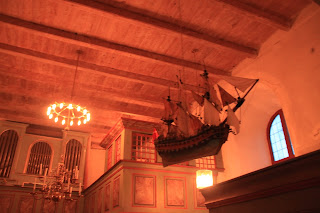Hey everyone!
This post is going to be focuss in many trips that we have made. During the course we have visited many churches in different localizations of Nordland. But, athough there are thousand of kilometers from each other, many of them have common characteristics, such as:

Many of the churches has round arches, characteristic of the romanic style.
The alterpieces
As we can see, all of them have baroque style: the colors take more importance (red, blue) and the gold is used. We can see aswell that in some of them the columns look like marble, but actually are made of wood; That is because the painter was looking for more reality.Appart from that, they have more than one dimensions and the same process: The last dinner in the first dimension, Jesus crucified in the second and finally, Jesus ascending to the heaven. One interesting information is that many years ago in Bodin Church, the ceiling was lower and in consequence, people couldn't see Jesus reaching peace. So, probably they didn't know how was the last part of the alter and they could just imagine it.
Boats hanging in the ceiling
 |
| Herøy church |
 |
| Gildeskål |
 |
| Bodin Church |
The boats are an element that many churches have. One special thing is
that there are sailing against the East, because God is in the East. I guess
that all of them have a small story. For example, the boat in Bodin Church is a
replica of the Ana Carolina, which sailed from Lofoten to Bergen for the
fishtrade. The case of Herøy Church's boat is different; This
time the priests' sons made a trick and the priest got so angry that he banned
the entry to the church to them and to all their familiars. The familiars
decided to make a present (the boat) to get the forgiveness of the priest. However, they didn't get it until 1894.
To end with this post, I made a little surprise for you. I tried to do my best, so I hope you like it :)






















